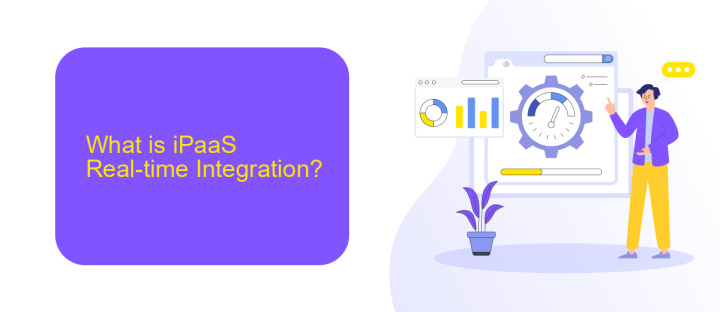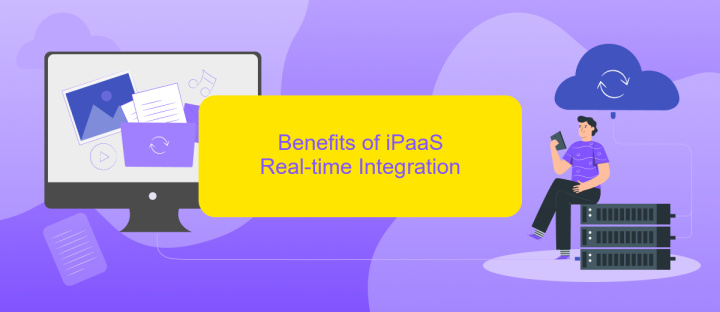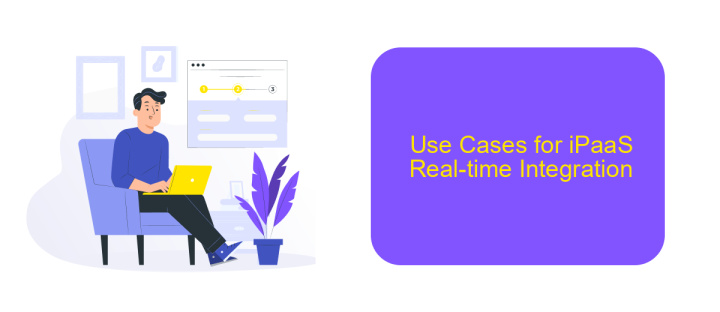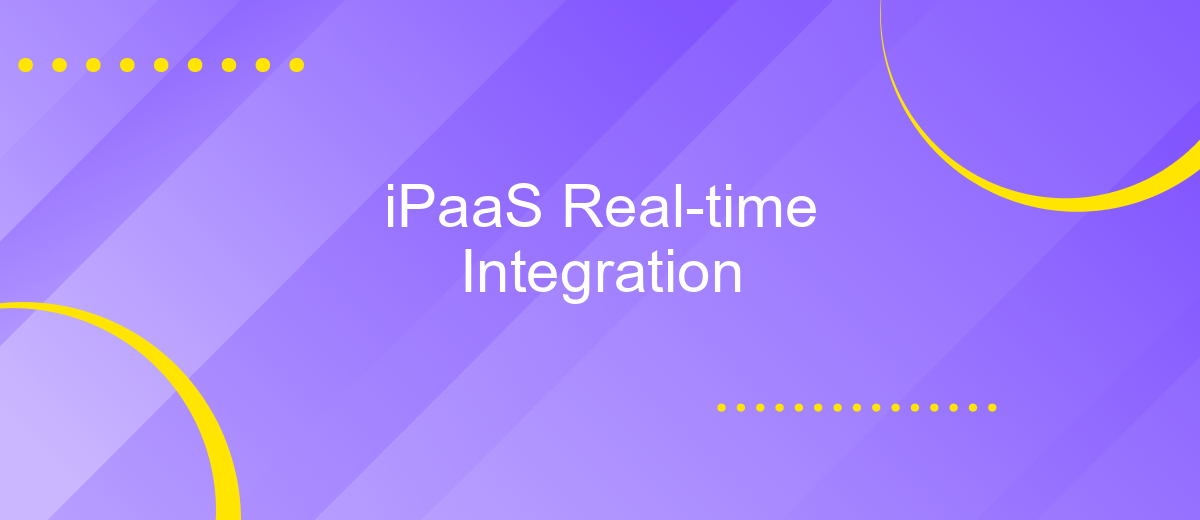iPaaS Real-time Integration
In today's fast-paced digital landscape, businesses require seamless and instantaneous data exchange across various platforms. Integration Platform as a Service (iPaaS) offers a robust solution for real-time integration, enabling organizations to connect disparate systems quickly and efficiently. This article explores the key benefits, challenges, and best practices of implementing iPaaS for real-time data integration, ensuring your business stays agile and competitive.
Introduction
In today's fast-paced digital landscape, businesses are increasingly relying on real-time data to make informed decisions and optimize operations. Integration Platform as a Service (iPaaS) solutions have emerged as a crucial tool for achieving seamless real-time integration across various applications and systems. These platforms facilitate the rapid and efficient exchange of data, enabling organizations to stay agile and responsive to market changes.
- Streamlined data synchronization
- Enhanced operational efficiency
- Improved data accuracy and consistency
- Scalability to accommodate growing data needs
One notable example is ApiX-Drive, a service designed to simplify the setup of integrations. With its user-friendly interface, ApiX-Drive allows businesses to connect disparate systems without the need for extensive coding knowledge. This empowers organizations to focus on leveraging real-time data insights rather than getting bogged down by the complexities of integration.
What is iPaaS Real-time Integration?

iPaaS Real-time Integration is a cloud-based solution designed to facilitate seamless data exchange between disparate systems and applications in real-time. By leveraging iPaaS, businesses can automate workflows, synchronize data, and ensure that information is consistently up-to-date across all platforms. This integration approach helps in reducing manual efforts, minimizing errors, and enhancing overall operational efficiency.
One of the key players in this domain is ApiX-Drive, a service that simplifies the setup of real-time integrations. ApiX-Drive offers a user-friendly interface and pre-built connectors, enabling businesses to quickly and easily link various applications without the need for extensive coding knowledge. This allows organizations to focus on their core activities while ensuring that their systems remain interconnected and responsive to changes as they happen.
Benefits of iPaaS Real-time Integration

iPaaS real-time integration offers numerous advantages for businesses looking to streamline their operations and enhance data connectivity. By enabling seamless communication between various applications and systems, iPaaS ensures that data is synchronized and updated in real-time, leading to improved efficiency and decision-making.
- Enhanced Efficiency: Automating data transfers and workflows reduces manual tasks, saving time and minimizing errors.
- Scalability: iPaaS platforms like ApiX-Drive allow businesses to scale their integrations as they grow, accommodating increasing data volumes and complexity.
- Cost Savings: By reducing the need for custom integrations and ongoing maintenance, iPaaS solutions help lower operational costs.
- Improved Data Accuracy: Real-time synchronization ensures that all systems have the most up-to-date information, reducing discrepancies and enhancing data reliability.
- Flexibility: iPaaS supports a wide range of applications and protocols, making it easier to integrate diverse systems and adapt to changing business needs.
Implementing iPaaS real-time integration can significantly benefit organizations by providing a more agile, efficient, and cost-effective way to manage their data and processes. Services like ApiX-Drive simplify the setup and management of these integrations, ensuring that businesses can focus on their core activities while enjoying the benefits of seamless connectivity.
Use Cases for iPaaS Real-time Integration

iPaaS real-time integration is essential for modern businesses looking to streamline their operations and improve efficiency. By enabling instantaneous data exchange between disparate systems, companies can respond to market changes and customer demands more rapidly. This capability is particularly valuable in industries where timing is critical, such as finance, healthcare, and e-commerce.
One of the primary use cases for iPaaS real-time integration is in customer relationship management (CRM). By integrating CRM systems with other business applications, companies can ensure that customer data is always up-to-date, allowing for more personalized and timely interactions. Additionally, real-time integration can enhance supply chain management by providing immediate visibility into inventory levels, order status, and shipment tracking.
- Real-time data synchronization between CRM and marketing automation tools
- Instant updates between e-commerce platforms and inventory management systems
- Seamless integration of financial systems for real-time reporting and analytics
- Immediate data exchange between healthcare systems for patient care coordination
ApiX-Drive is a service that simplifies the setup of these integrations, offering a user-friendly interface and a wide range of pre-built connectors. This allows businesses to quickly implement real-time data flows without the need for extensive technical expertise, making it easier to leverage the full potential of iPaaS real-time integration.
iPaaS Real-time Integration Implementation
Implementing iPaaS for real-time integration involves several key steps to ensure seamless data flow between various applications and systems. First, it is essential to identify the specific data sources and destinations that need to be integrated. This includes understanding the data formats, protocols, and any transformation requirements. Once the data sources are identified, the next step is to configure the integration platform to handle these connections. This often involves setting up API connections, defining data mapping rules, and establishing triggers for real-time data synchronization.
One useful tool for this process is ApiX-Drive, which simplifies the setup of real-time integrations. With ApiX-Drive, users can easily connect different applications without extensive coding knowledge. The platform provides pre-built connectors and a user-friendly interface to map data fields and configure integration workflows. Additionally, ApiX-Drive supports real-time data processing, ensuring that information is updated across systems almost instantaneously. By leveraging such tools, businesses can achieve efficient and reliable real-time integration, enhancing their operational efficiency and data accuracy.


FAQ
What is iPaaS Real-time Integration?
How does real-time integration benefit businesses?
What are some common use cases for iPaaS Real-time Integration?
How can I set up real-time integrations for my business?
What challenges might I face with real-time integration, and how can I overcome them?
Apix-Drive is a simple and efficient system connector that will help you automate routine tasks and optimize business processes. You can save time and money, direct these resources to more important purposes. Test ApiX-Drive and make sure that this tool will relieve your employees and after 5 minutes of settings your business will start working faster.

